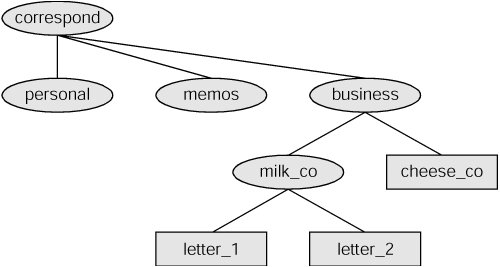The Hierarchical Filesystem
|
Family tree A hierarchical structure (page 1035) frequently takes the shape of a pyramid. One example of this type of structure is found by tracing a family's lineage: A couple has a child, who may in turn have several children, each of whom may have more children. This hierarchical structure is called a family tree (Figure 6-1). Figure 6-1. A family tree
Directory tree Like the family tree it resembles, the Linux filesystem is called a tree. It consists of a set of connected files. This structure allows you to organize files so you can easily find any particular one. On a standard Linux system, each user starts with one directory, to which the user can add subdirectories to any desired level. By creating multiple levels of subdirectories, a user can expand the structure as needed.
Subdirectories Typically each subdirectory is dedicated to a single subject, such as a person, project, or event. The subject dictates whether a subdirectory should be subdivided further. For example, Figure 6-2 shows a secretary's subdirectory named correspond. This directory contains three subdirectories: business, memos, and personal. The business directory contains files that store each letter the secretary types. If you expect many letters to go to one client, as is the case with milk_co, you can dedicate a subdirectory to that client. Figure 6-2. A secretary's directories One major strength of the Linux filesystem is its ability to adapt to users' needs. You can take advantage of this strength by strategically organizing your files so they are most convenient and useful for you. |
EAN: 2147483647
Pages: 383

